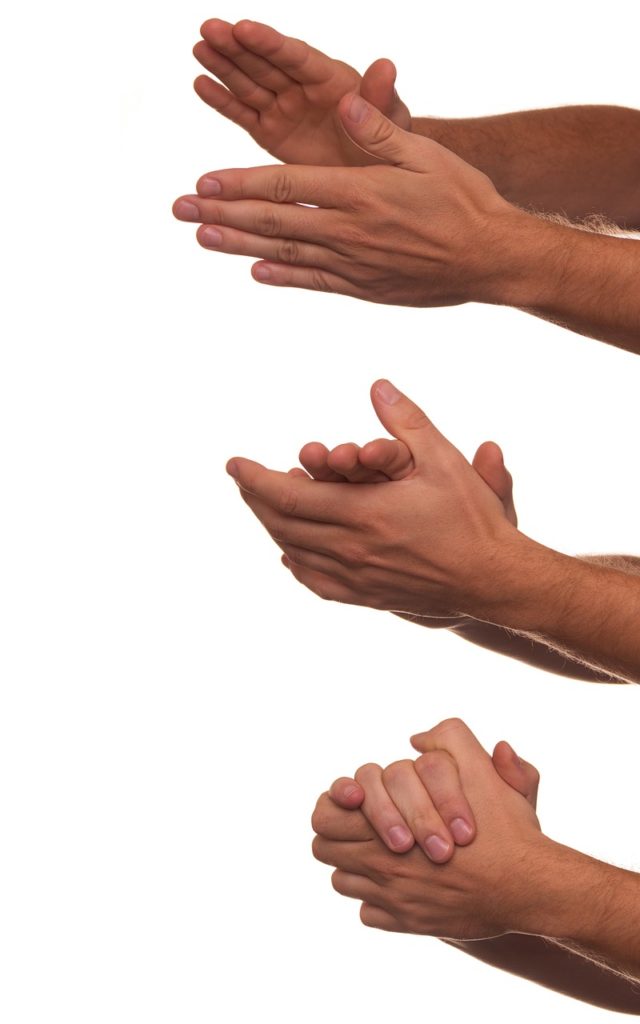As you attempt the color coded quarter note clapping, count the numbers out loud one after the other, going from left to right.
- Clap when you say the red numbers, and do not clap when you say the blue numbers.
- In addition, I have included sound tracks that demonstrate the rhythms.
- DO NOT listen to the tracks before you try clapping.
- Instead, use the sound tracks to check yourself after you have clapped the rhythm.
As you clap, pay attention to how many counts each type of note gets:
- Quarter note: a black notehead and a stem = 1 count
- Half note: a white notehead and a stem = 2 counts
- Dotted half note: a half note with a dot to the right of the note = 3 counts
- Whole note: a white notehead but without a stem = 4 counts
Also, I have provided an example of a tied note.
- I put an “X” over the second note of the tied pair to show that it does not get clapped.
- In addition, the examples go through the most common rhythmic patterns for the 4/4 and 3/4 time signatures.
- Once you can clap the exercises with confidence, try the quiz.
Mobile users: for best results reading the music examples, tilt your screen 90o to the right.


